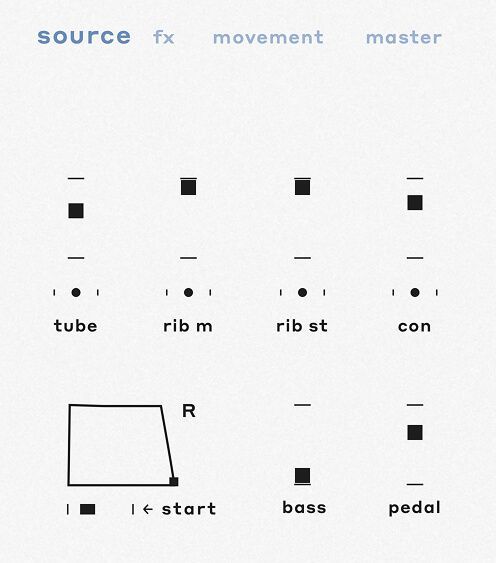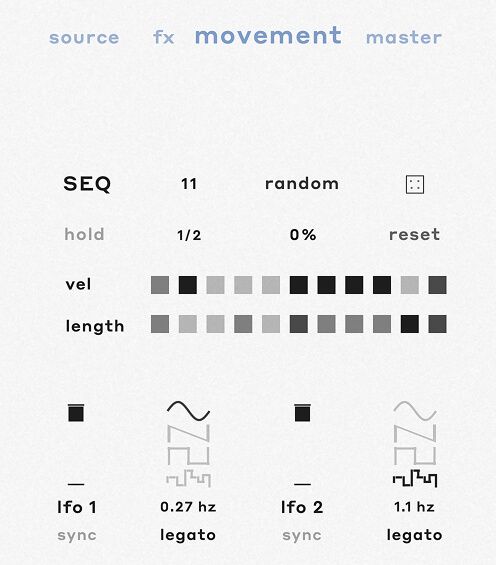TISH
Concert Vibraphone
This is a rare instrument that spent decades in a European opera house, filling grand halls with its voice.
We brought it to our studio and recorded it in an intimate setting with a remarkable musician.
Despite its history, it speaks in a quiet, introspective tone — just the way we love it.
WALKTHROUGH:
THE MAKING
OF TONE
The instrument includes 5 presets, each with its own X-slider blending four sound layers.
All layers are based on the original vibraphone tone, along with sounds from rare synths, oscillators, and test equipment. It was recorded extremely softly using 8 microphones — mostly ribbon and tube — with up to 5 velocity layers and 8 round robins:
SUSTAINS
Sustains were recorded in two styles — with soft mallets and wooden sticks. Even the loudest dynamic was performed incredibly softly. Using high gain in various tube preamps, we captured every nuance.
This preset also includes randomly played octaves on the X-slider side, which sound especially beautiful when playing chords.
MUTES
Short muted notes recorded in two versions — with soft mallets and with wooden sticks.
One of the sound design layers is synthesized through a tube oscillator modulated by the vibraphone itself. Another layer is a cassette-recorded version of the mutes, captured multiple times at reduced speed on an old Japanese tape recorder.
BOWED
Played with a cello bow, this articulation has two velocity layers: short and wavy in soft dynamics, longer and more intense in louder ones.
The X-slider layers mimic the bowed tone using oscillators, LFOs, and function generators — some running fast enough to produce musical tones we sampled for this patch.
TAPE SUSTAINS
A sustain vibraphone recorded on several reel-to-reel tape machines (Studer, Telefunken, and Uher) in two versions:
- Type I – Recorded at half speed, combined with tube compressors and EQs
- Type II – Recorded at double-half speed for a more degraded, lo-fi character
This preset's X-slider includes multiphonics played on the vibraphone tubes with a bow — a rare and mysterious technique. Another layer is vibraphone tremolo, where the playback speed of each note varies based on round robins.
PREPARED
Prepared vibraphone was recorded by placing different objects on each note — coins, paper, foil, wood — all vibrating from the mallet strike.
Each of the 8 round robins uses a different object, making the sound unpredictable.
The X-slider includes fast accented tremolo, and its processed version run through tape delays, loopers, and pitch shifters.
TISH: CONCERT VIBRAPHONE
INSIDE THE
INSTRUMENT




Source
The core sound is shaped by four sliders controlling each mic type's volume, each with its own panning slider. The instrument features 5 patches, each with four additional sound layers blended with the original sound via an X-slider.
FX
Classic effects with vintage charm:
- Vibrato - Adds small periodic changes in the pitch of the signal.
- Warm - Creates rich, nonlinear distortions for a gritty, edgy vibe.
- Tremolo – Introduces subtle amplitude modulation that adds motion and pulse to the sound.
- Echo and Reverb - Make the sound ethereal and mesmerizing.
- The Master section has a filter and a shelving EQ, allowing for precise sound sculpting.
Movement
The Movement panel houses a 12-step, highly customizable sequencer and two LFO modules—the heart of our instrument—that can be connected to all key elements.
Master
The Master panel features two vintage octave filters that split the signal into 10 and 16 bands, along with a three-band shelving EQ with adjustable crossover frequencies. Also present are controls for pitch, noise level, and output signal.
INSTRUMENT
PROFILE
FEAUTURES
- 5 different variations of the main sound
- Custom tape designed and eurorack style patches
- Up to 5 velocity per note and 8 RR
- VST3/AU plugin for macOS (10.11+) and Windows
- NOT compatible with Pro Tools and any other DAWs that do not support VST3/AU formats.
- 5.5 GB compressed
- 7.6 GB uncompressed
Support & Updates
From the moment you acquired TISH you will have all the future updates for free. These updates will include not only the technical fixes, but also new patches and sounds.
If there are any issues with the instruments, please, contact us at hello@elementarysounds.com straight away. We are usually very quick to answer.
We're working on new plugins all the time. Even now while you're reading this sentence.
Don't miss the moment when it's ready for you to use.
We will get back to you as soon as possible.
Please try again later.


